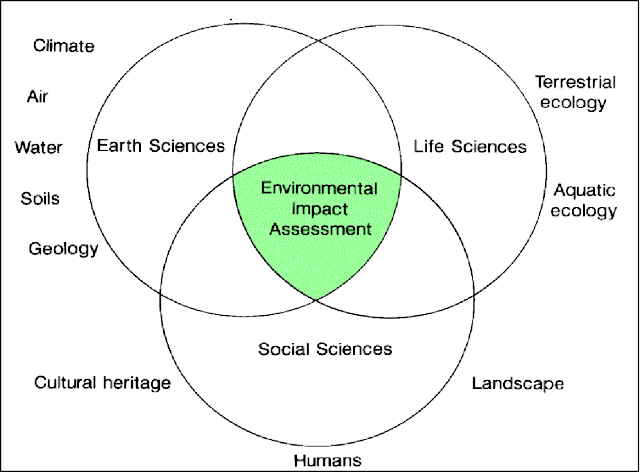A life cycle assessment (LCA) is a systematic look at the environmental impacts of a product, installation, service or process. It focuses on energy and materials, both as input and output. Industries tasked with producing them complain about the time and expense, which has led to streamlining of the process through the decades. LCAs focus on one specific item, and its overall environmental impact from creation to decomposition. An LCA is not location-specific. It will examine the effects of resource acquisition, transport, manufacture, use, and waste disposal—wherever they occur. Essentially, an LCA answers the question: “how green is it?”
There is a close relationship between LCAs and Environmental Impact Assessments (EIAs), but they are not the same. EIAs are much broader, and designed to contribute to a decision-making process about the range of impacts of a potentially complicated series of activities (such as the start-to-finish preparation for and construction of an offshore wind farm). Critically, EIAs focus on one location: what will be the full range of environmental effects (biological, geological, air quality, water quality, noise, visual, and more), at that specific place, of a given construction? EIAs are required by federal and state laws in the US, and in many other countries around the world. LCAs are not, but they do provide valuable insight.
There are five basic parts to a Life Cycle Assessment:
- Raw Material Extraction
- Manufacturing & Processing
- Transportation
- Usage & Retail
- Waste Disposal
Since LCAs are limited to inputs and outputs of matter and
energy (and not other environmental impacts like noise, aesthetics, and effects
on other species), they are properly engineering studies. The product, process
or service is looked at as a system. And in engineering system analysis, much
of the work is declaring where to “draw the system boundaries”—that is, what
materials and energy to include in the system, and what to exclude.
These decisions go a very long way toward determining the
results. Too narrow a system definition understates the impacts. Too large a
system definition overstates them. Either way reduces the LCA’s effectiveness
as a tool for understanding.
The assessment deals with the five life cycle steps in the
following way:
- Compiling an inventory of relevant inputs and outputs,
- Evaluating the potential environmental impacts associated with those inputs and outputs,
- Interpreting the results of the inventory and impact phases in relation to the objectives of the study. [ISO 14040]
In this way the LCA clearly states both its own objectives
and the parameters—matter and energy inputs and outputs—of the system, and the
potential effects. It is meant to be comprehensive, covering all impacts
wherever and whenever they occur, throughout the lifespan (from raw material
extraction to waste disposal) of the system in question.
Tomorrow: life cycle assessments for electric vehicles
(EVs).
Be brave, be steadfast, and be well.







No comments:
Post a Comment